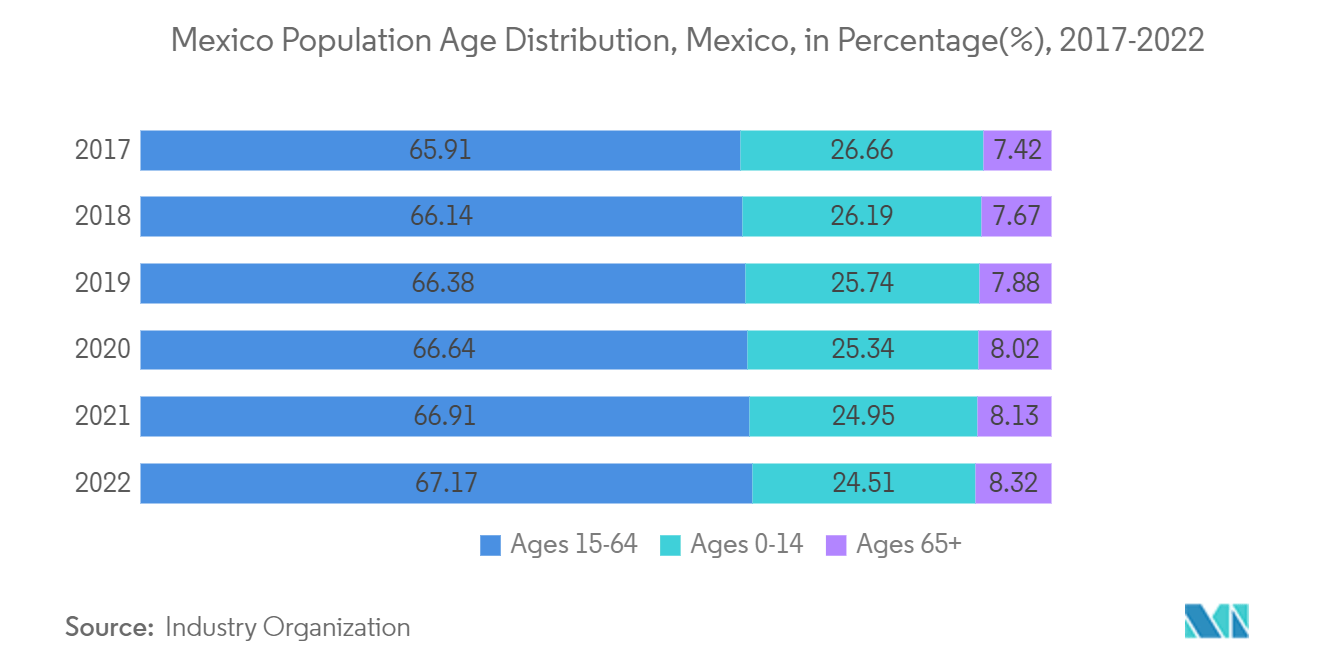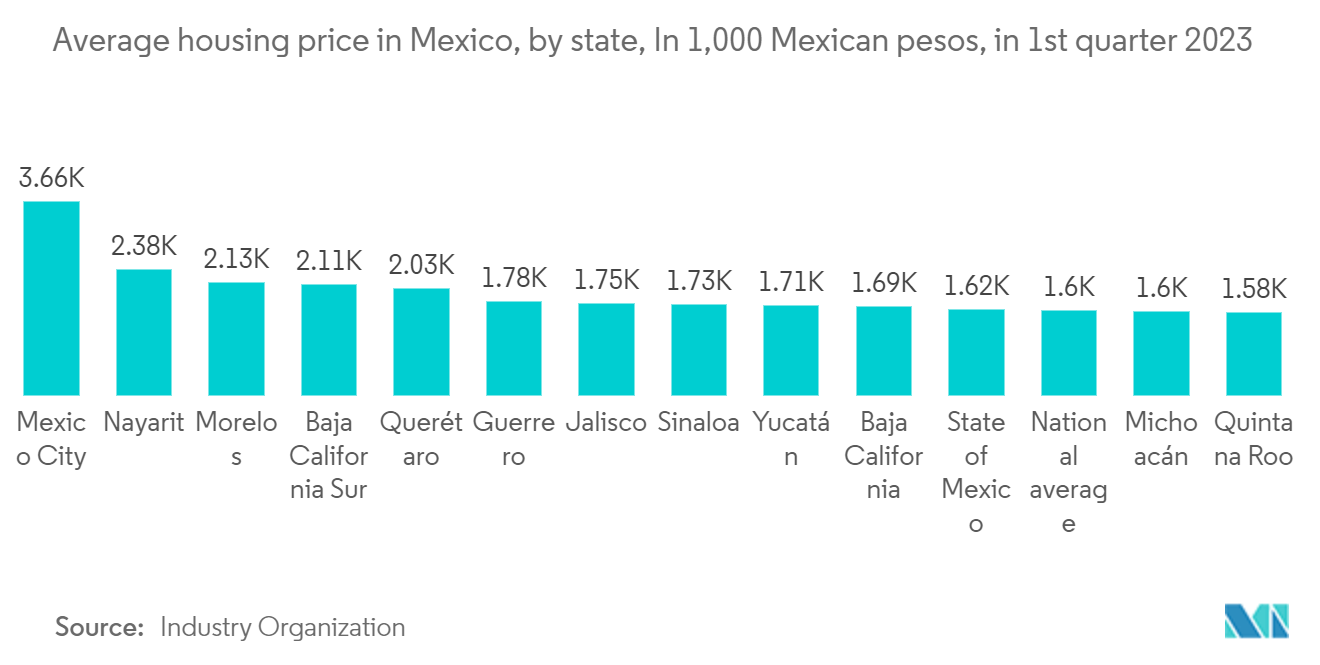Market Trends of Residential Real Estate Industry In Mexico
Demand for Residential Real Estate Witnessing Notable Surge, Primarily Driven by Young Homebuyers
- According to industry sources, the generation of young adults between the ages of 27 and 40 is driving the growth in housing demand. Since they can now buy a home far from their workplaces or neighborhoods that fulfill their social and economic expectations, this sector has significantly benefited from adopting a new kind of working from home. For instance, closeness to work hubs has taken a backseat in Mexico City. Since the trend is now to have "home offices," that is, work from home on a property anywhere in the country, this change in working conditions opens up various opportunities for housing developers around the nation.
- Real estate developments must respond to this new requirement by updating the complex's recreational areas and ensuring technical coverage while adjusting to recent market trends and preferences. With this innovative method of working, employees can conduct their tasks from wherever makes them feel most at ease, giving them the option of working in the heart of Mexico, the United States, Canada, or anywhere else in the world while conducting "home offices" from the Riviera Maya.
- The Mexican residential real estate industry is growing due to young people demanding a place to live. The housing demand projected for the next few years will be driven by people under 30 (representing 55% of the country's population). The Bajio zone, formed by Aguascalientes, San Luis Potosí, Guanajuato, Querétaro, and the northern region of Mexico, is exciting. Cities like Monterrey are growing because of the demand for corporate and residential spaces. Tourism growth in destinations like Cancun, Los Cabos, and Puerto Vallarta also encourages real estate developments. In 2022, around 24.51% of Mexico's population were between 0 and 14 years of age, around 67.17% between the ages of 15 and 64, and about 8.32% were 65 years or older.

Surge in Average Housing Prices in Mexico is Propelling the Country's Residential Market
- The housing sector in Mexico plays a pivotal role, accounting for roughly 6% of the nation's GDP. A majority of homes, about 69%, are owned outright, while only 15% are rented. This preference for ownership is evident, with nearly 69% of Mexican households owning their homes in 2020, while only 17% opted for renting. Furthermore, a significant 87% of owned homes were debt-free, underscoring the financial stability of homeownership in the country.
- Over the past decade, residential real estate prices in Mexico have witnessed a consistent uptrend. In Q3 2023, the average house price saw an annual increase of over 10%, or 5.5% when adjusted for inflation. Amongst the states, Mexico City emerged as the costliest market for homebuyers.
- In Q3 2023, the average residential property in Mexico commanded a price of MXN 1.6 million. This marked a nearly 15% surge from the previous year. Notably, Mexico City stood out with an average price exceeding three million pesos per unit. Continuing its lead, Mexico City retained its status as the priciest residential market in 2023. With an average cost of nearly MXN 3.7 million in Q3, it stood at almost double the national average.
- The Mexican housing market demonstrates a strong preference for ownership, with a significant portion of homes owned outright. The market has experienced a steady increase in residential property prices, particularly in Mexico City, which remains the most expensive market. These trends highlight the robust nature of the housing sector as a key contributor to Mexico's economic stability.


